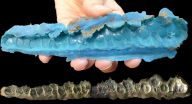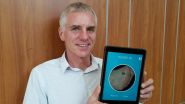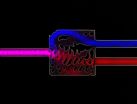Aftershock assessment
Building collapse during earthquake aftershocks
2015-05-28
(Press-News.org) Earthquakes kill, but their aftershocks can cause the rapid collapse of buildings left standing in the aftermath of the initial quake. Research published in the International Journal of Reliability and Safety offers a new approach to predicting which buildings might be most susceptible to potentially devastating collapse due to the ground-shaking aftershock tremors.
Negar Nazari and John W. van de Lindt of the Department of Civil and Environmental Engineering, at Colorado State University in Fort Collins and Yue Li of Michigan Technological University, in Houghton, USA, point out that it is relatively obvious that buildings that survive a main shock will be at varying degrees of risk of collapse as aftershocks travel through the earthquake zone. Aftershocks are usually several orders of magnitude less intense than the primary earthquake, but can nevertheless have high ground motion intensity, last longer and occur at different vibration frequencies. In addition, changes in the structure of a building and its foundations, whether crippling or not, mean that the different energy content of the ground acceleration can during an aftershock further complicates any analysis. This adds up to a very difficult risk assessment for surviving buildings.
In order to compute the risk of collapse, the probability, for building damaged by a main shock, the team has introduced a logical method based on two key earthquake variables: magnitude and site-to-source distance. They have carried out tests using different site-to-source distances with an incremental dynamic analysis based on simulated ground motions caused by the main shock and aftershocks and applied this to a computer modeled, two-storey, timber-frame building in a hypothetical town in California relatively close to a geological fault line, as a proof of principle. Full-scale structural data was available from an actual building.
The team found that collapse probability increased if there were a sequence of aftershocks following a main shock just 10 kilometers distant from the building. Stronger aftershocks mean greater risk that correlates with the actual magnitude of the shock. As one might also expect if the site-to-source distance is greater, risk is lower. Overall, however, the analysis allows the team to quantify this risk based on the two variables, distance and aftershock magnitude.
INFORMATION:
Nazari, N., van de Lindt, J.W. and Li, Y. (2014) 'Effect of aftershock intensity on seismic collapse fragilities', Int. J. Reliability and Safety, Vol. 8, Nos. 2/3/4, pp.174-195.
ELSE PRESS RELEASES FROM THIS DATE:
2015-05-28
In the most extensive survey of its kind ever conducted, a team of scientists have found an unambiguous link between the presence of supermassive black holes that power high-speed, radio-signal-emitting jets and the merger history of their host galaxies. Almost all of the galaxies hosting these jets were found to be merging with another galaxy, or to have done so recently. The results lend significant weight to the case for jets being the result of merging black holes and will be presented in the Astrophysical Journal.
A team of astronomers using the NASA/ESA Hubble Space ...
2015-05-28
Researchers from the University of Leicester have discovered that when it comes to rubbers, textured surfaces, and reproduction, more fluid formulations have greater reliability than those that are thick and sticky.
Rubber compounds are widely used to mould and produce copies of textured surfaces for scientific analysis, but so far little research has been done to establish which rubbers make the most reliable copies.
A new study published in the academic journal Scientific Reports, led by Professor Mark Purnell from the University of Leicester's Department of Geology, ...
2015-05-28
The fixed-dose drug combination ombitasvir/paritaprevir/ritonavir (trade name Viekirax) has been available since January 2015 for the treatment of adults with chronic hepatitis C infection. The German Institute for Quality and Efficiency in Health Care (IQWiG) examined in a dossier assessment whether this drug combination offers an added benefit over the appropriate comparator therapy.
According to the findings, there are indications of an added benefit in patients who have not yet developed cirrhosis of the liver and who are infected with the hepatitis C virus (HCV) ...
2015-05-28
This news release is available in German. FRANKFURT. Scientists at the Goethe University Frankfurt and at the Senckenberg Biodiversity and Climate Research Centre working together with their Canadian counterparts, have reconstructed the climatic development of the Arctic Ocean during the Cretaceous period, 145 to 66 million years ago. The research team comes to the conclusion that there was a severe cold snap during the geological age known for its extreme greenhouse climate. The study published in the professional journal Geology is also intended to help improve prognoses ...
2015-05-28
(Edmonton) Each year, thousands of Canadians are given the news: they have skin cancer. It is the most common form of cancer in Canada and around the world, but if detected early, survival rates are extremely high. According to Liam Rourke, it doesn't happen nearly as often as it could.
"The difficulty is that people have a really hard time detecting skin cancer melanomas early," says Rourke, an associate professor in the Faculty of Medicine & Dentistry's Department of Medicine at the University of Alberta. "One of the reasons is that it's an exceptionally difficult task ...
2015-05-28
Investigators at Stanford University have found a surprising link between creative problem-solving and heightened activity in the cerebellum, a structure located in the back of the brain and more typically thought of as the body's movement-coordination center.
In designing the study, the researchers drew inspiration from the game Pictionary.
The cerebellum, traditionally viewed as the brain's practice-makes-perfect, movement-control center, hasn't been previously recognized as critical to creativity. The new study, a collaboration between the School of Medicine and ...
2015-05-28
Stanford electrical engineer Jelena Vuckovic wants to make computers faster and more efficient by reinventing how they send data back and forth between chips, where the work is done.
In computers today, data is pushed through wires as a stream of electrons. That takes a lot of power, which helps explain why laptops get so warm.
"Several years ago, my colleague David Miller carefully analyzed power consumption in computers, and the results were striking," said Vuckovic, referring to electrical engineering Professor David Miller. "Up to 80 percent of the microprocessor ...
2015-05-28
A quantum system never relaxes. An isolated system (like a cloud of cold atoms trapped in optical grids) will endlessly oscillate between its different configurations without ever finding peace. In practice, these types of systems are unable to dissipate energy in any form. This is the exact opposite of what happens in classical physics, where the tendency to reach a state of equilibrium is such a fundamental drive that is has been made a fundamental law of physics, i.e., the second law of thermodynamics, which introduces the concept of entropy.
This profound difference ...
2015-05-28
WASHINGTON -- People who earn a college degree before getting married are much less likely to become obese than those who graduate from college after getting married, according to a new study.
"People who get married before they earn a degree from a four-year college are about 65 percent more likely to later become obese than people who get married after college," said Richard Allen Miech, a research professor at the Institute for Social Research at the University of Michigan and the lead author of the study. "While a college degree has long been shown to be associated ...
2015-05-28
A fifty-fold between-country difference in rates of paracetamol-induced acute liver failure that leads to liver transplant (ALFT) has been revealed by a study that compared patient data from seven countries at the request of the European Medicines Agency: France, Greece, Ireland, Italy, Netherlands, Portugal and the UK. Researchers discovered that this variation was even more pronounced on a per-capita basis, with a 200-fold difference in ALFT cases. Publishing these findings in the British Journal of Clinical Pharmacology, the authors call for further research to identify ...
LAST 30 PRESS RELEASES:
[Press-News.org] Aftershock assessment
Building collapse during earthquake aftershocks



